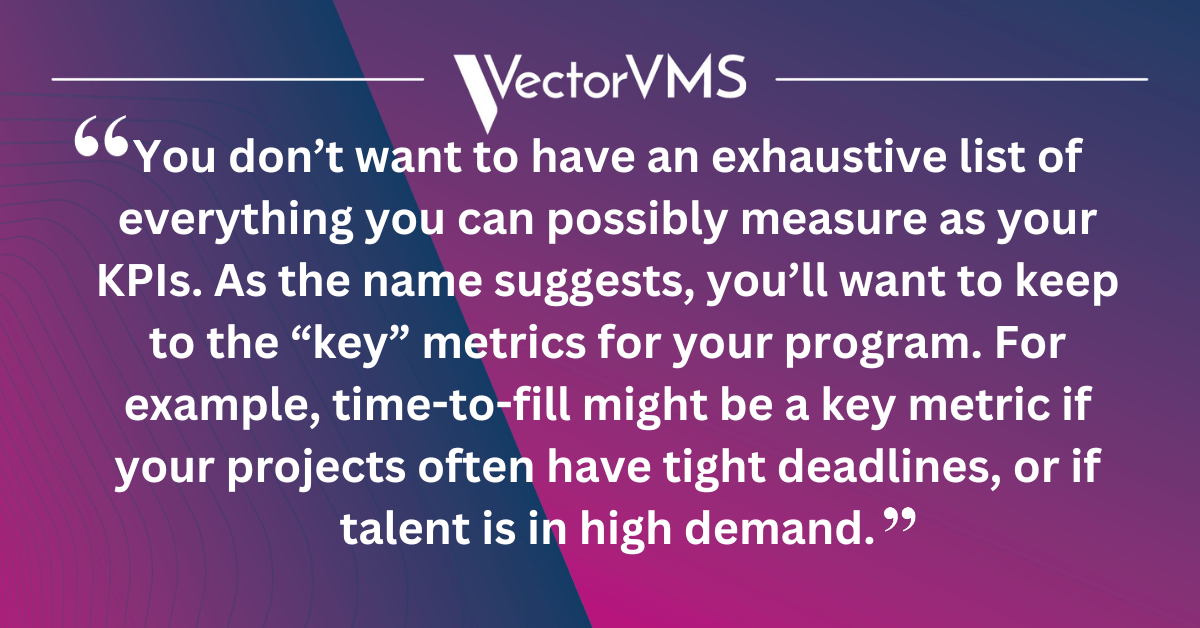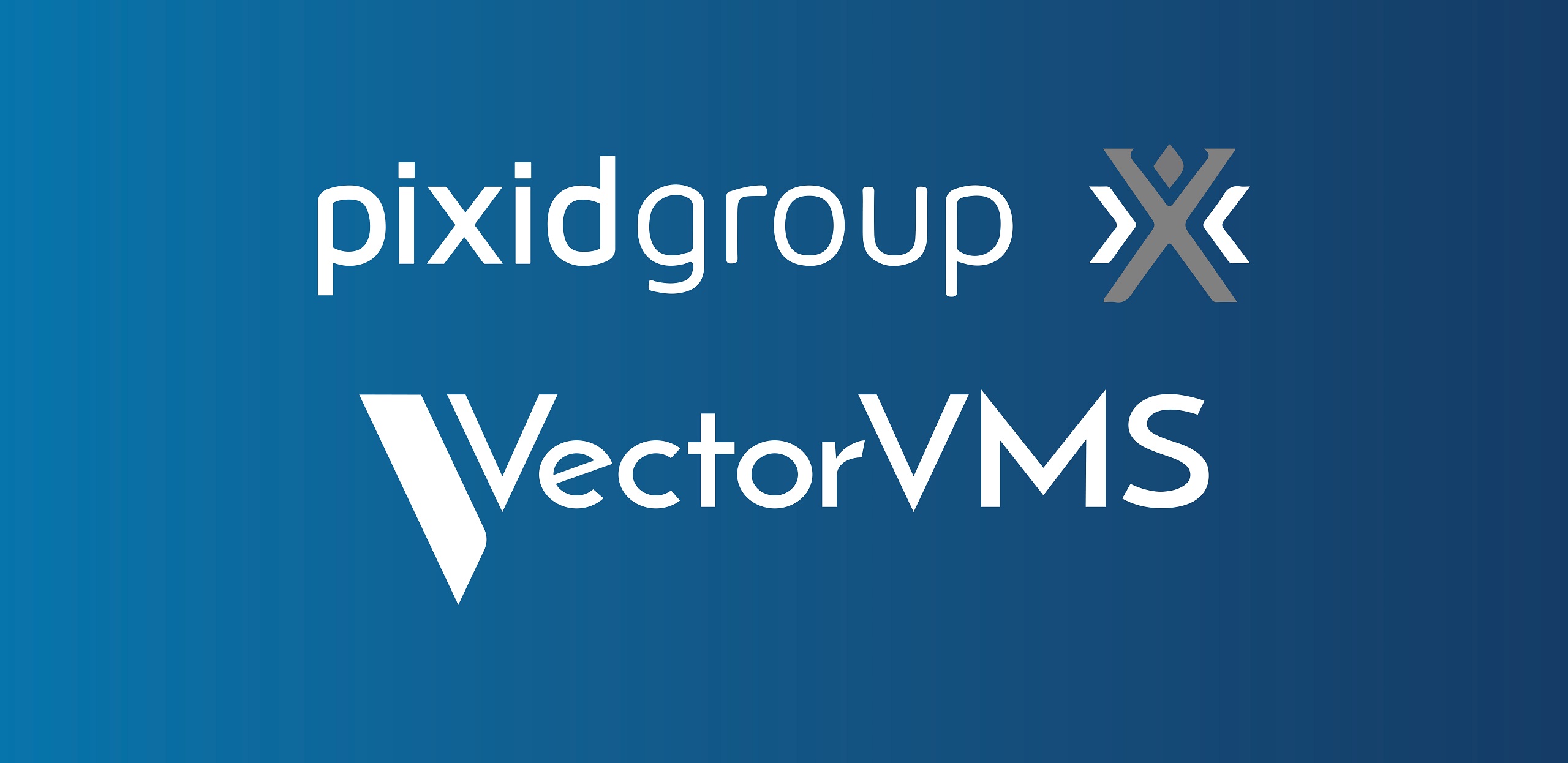Unless you opt for full external management via a managed service provider (MSP), it’s likely that at least part of your contingent workforce management will be accomplished in-house. Whether you choose to manage all of your organization’s vendors internally or choose a hybrid service program such as VectorVMS’s Shared Managed Services (SMS), your team will need to be armed with expert knowledge about vendor management best practices.
In this article, we talk about an essential part of that process: Establishing KPIs for your vendors.
If you don’t already have key performance indicators (KPIs) established, how are you holding your vendors accountable? These KPIs vary from organization to organization, business unit to business unit. Here’s how to get started:
1. Review the Metrics That Are Important to Your Program
How long is the time-to-fill, i.e. how long does it take for the vendor to fill your open requisition? How many candidates do they submit per requisition, and how many get an interview? What kind of turnover do you see from their candidates?
You may also want to track their compliance requirements and rates. Do they pass your audit? What are their current rates, and have they changed?
Ultimately, you want to make sure that you’re getting the best value from your extended workforce, and your vendors are a key part of finding quality talent that meets your needs. When you have many suppliers in your program, it can be easy to overlook those that underperform. Holding each one to a short set of KPIs gives you the opportunity to take a high-level view of your vendor performance.
HANDPICKED FOR YOU | ‘How Effective Vendor Communication Reduces Compliance Risk in Your Contingent Workforce Program’

2. Narrow Down Your List to the Top Five or Six Metrics
You don’t want to have an exhaustive list of everything you can possibly measure as your KPIs. As the name suggests, you’ll want to keep to the “key” metrics for your program. For example, time-to-fill might be a key metric if your projects often have tight deadlines, or if talent is in high demand.
Limiting the number of KPIs makes measuring your vendors manageable and consistent.
What KPIs Do Other Businesses Use?
The following are examples of top KPIs (and suggested minimums in brackets) that some of our clients use:
- % of requisitions with submissions (75%)
- % candidates interviewed (33%)
- % candidates selected (20%)
- Turnover (low % such as “10-15%”)
- Audit results (passing score)
- Rate management (rate card, contracted mark-up, NTE rates, etc)
CHECK OUT THESE SUCCESS STORIES | ‘Customer Snapshots: Shared Managed Services Success Stories’
3. Review Your KPIs Annually
Reviewing your KPIs annually is important to make sure they’re still relevant. As your organization evolves and the market changes, you may have different requirements. For example, perhaps time-to-fill will no longer be as important as the number of candidates that make it through the interview process.
Once you have your KPIs established and up to date, you can begin to get a clear picture of your vendor performance. Using your vendor management system (VMS), you can gather the information you need to score your vendors. These scores give you the opportunity to find ways you can improve your program and align your vendors for success.

The Best Ally for Your In-House Contingent Workforce Program
Whether you work with a few or many suppliers, managing them throughout the entire process requires time, experience, and patience. Establishing the correct KPIs is just one of many good practices to set in place if you want to run a successful program. Other processes that are equally important include conducting regular audits, holding regular vendor summits, and establishing good channels of communication.
If you think your team needs help to implement these steps, but you still want to keep the contingent workforce management in-house, VectorVMS’s Shared Managed Services (SMS) hybrid program might be your best fit. With SMS, you can still manage your program directly while still getting help in the steps where you need it. Our industry experts can help you through different specialized services—from best practice consulting to everyday administration or data analysis.
If you want more tips on how to handle your contingent workforce internally, download our ebook ‘3 Keys to Supplier Success for In-House Extended Workforce Programs’. You can also get in touch with our team to know more about Shared Managed Services, we’d love to help you ensure a successful program!
 Meet the Expert
Meet the Expert
Teresa Hodges Bryant – Program Manager
With more than 25 years of experience in contingent workforce management, Teresa Hodges Bryant provides strategic consultation and program management for mid-market clients. As a member of our Strategic Services team, Teresa helps clients implement and optimize our vendor management system (VMS). She facilitates client-vendor partnerships, recommends program enhancements, and leads development workshops and other initiatives to help clients move from tactical to strategic program management. Connect with her on LinkedIn.



